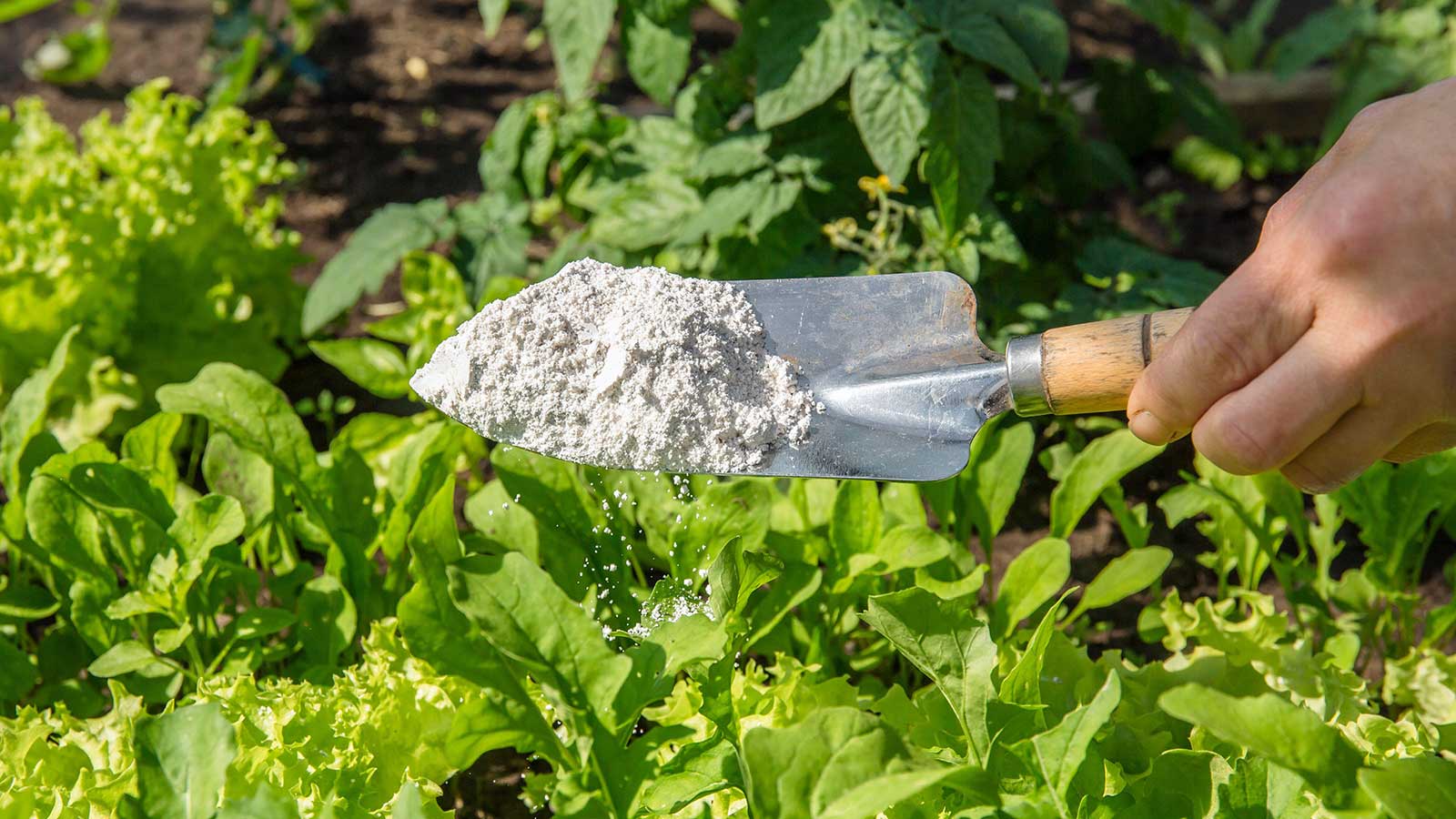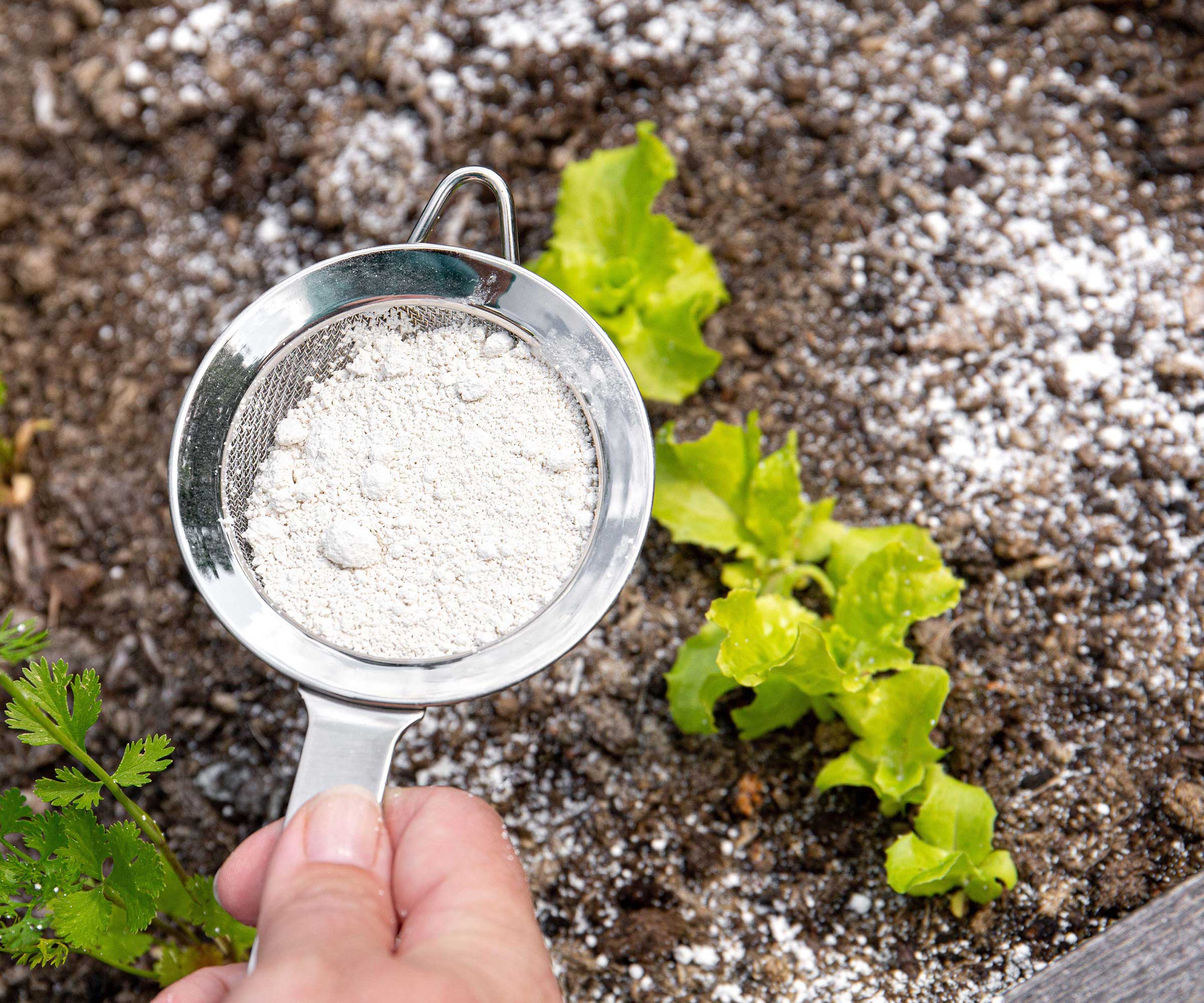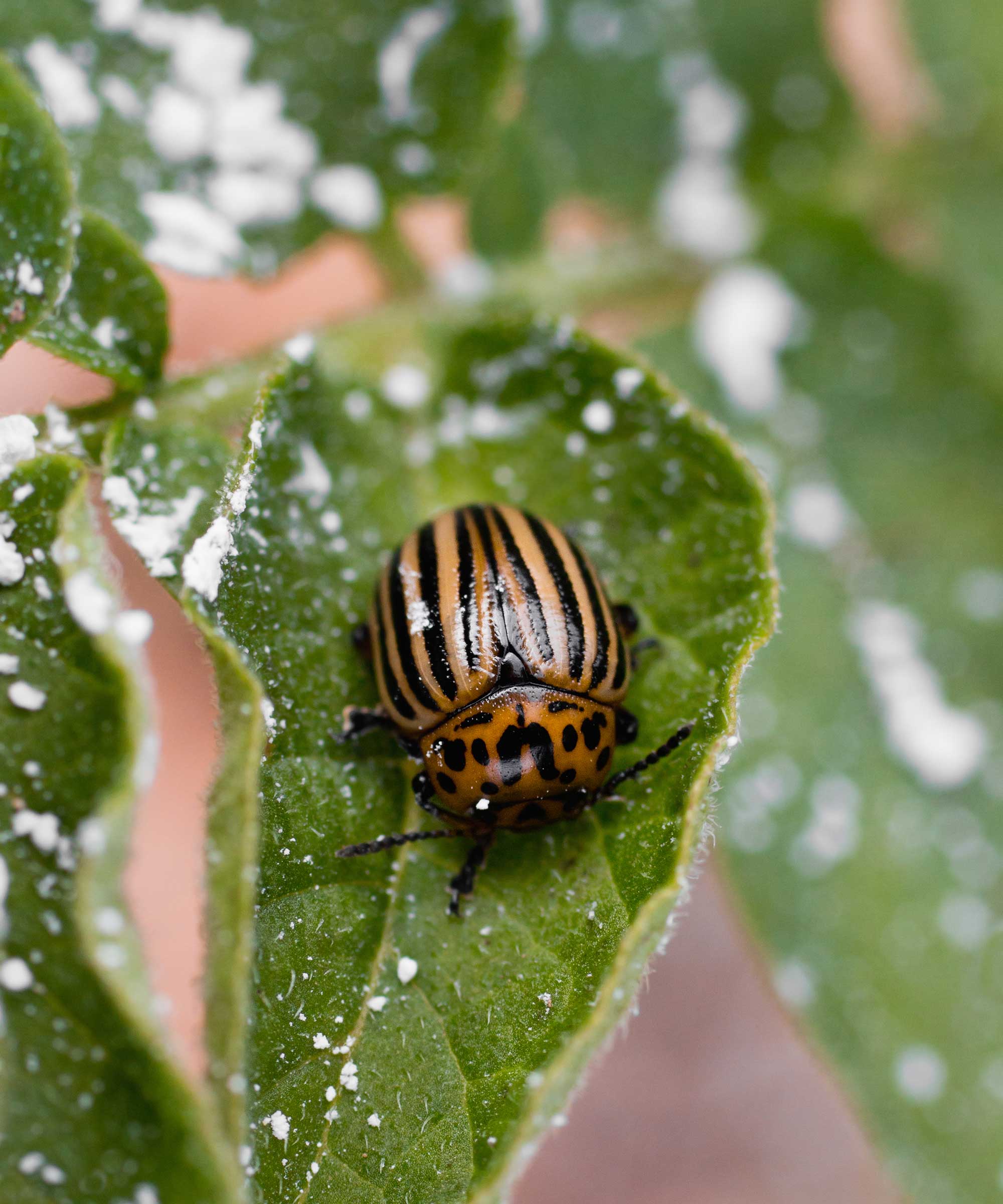Diatomaceous earth – how to use this non-toxic pest control in your yard
This natural material is a wonder at getting rid of aphids, roaches, slugs, and more


Q: What is diatomaceous earth, or DE as I've often heard it abbreviated to, and will it help get rid of the aphids in my garden?
A: 'Diatomaceous earth (DE) is a little-known, yet powerful, natural substance that can do wonders for your garden,' says Jonathan Ames, the lead designer at Bacqyard, a landscape design company. It's a fine and powdery substance, he explains, that's derived from the fossilized remains of microscopic aquatic organisms called diatoms. 'These organisms have hard, silica-based shells that contribute to the unique properties of DE.
'DE also contains trace amounts of other essential minerals like calcium, magnesium, and iron,' Jonathan continues. And yes – it can be an effective – and non-toxic – way to tackle aphids and other plant pests.

Sprinkle a fine layer of diatomaceous earth around your plants
How to use diatomaceous earth to get rid of garden pests
Although harmless to pets, humans and plants when used correctly, diatomaceous earth can get rid of all sorts of garden pests, including slugs, snails, roaches, mites, ants, millipedes, earwigs, silverfish, crickets – and aphids. 'The sharp-edged particles of DE penetrate the exoskeletons of pests, causing dehydration and death,' says Jonathan Ames.
'Think of DE as microscopic pieces of jagged, broken glass and you’ll understand how it works better,' says Bob Gilbert of Blue Sky Pest Control. 'With this in mind, always be careful when using DE as breathing it can be irritating, and potentially dangerous, to the applicator's lungs.' It's a good idea to wear protective glasses and a dust mask.
Always use food-grade diatomaceous earth, which is available from Amazon. To apply, place it around plant stems, in furrows, or other areas on the soil surface where pests are likely to travel to reach garden plants, Bob says. 'Make sure it is applied in an unbroken barrier around the plant.
'A light dusting can be applied to leaves, but caution should be used not to apply so much as to limit or prevent sunlight from reaching exposed leaf surfaces for photosynthesis. Also, avoid applying to flowers so as not to kill important pollinators, such as bees and butterflies,' Bob continues.
'Regardless of where the DE is applied, thin layers are the rule. Less is more. Pests tend to avoid thick layers of DE powder.' It is much less effective in moist or wet environments, he adds.

Bob is a Board Certified Entomologist with Blue Sky Pest Control in Gilbert, Arizona where he is the Staff Entomologist and technical trainer. Bob has his BS degree from SUNY College of Environmental Science & Forestry in Environmental and Forest Biology and an MS degree in Entomology from Clemson University where he worked in pesticide toxicology. He is a member and volunteer of numerous entomological organizations.

Diatomaceous earth kills many pests
Other advantages of using diatomaceous earth in the garden
'In addition to its pest-control properties, diatomaceous earth can help improve soil structure and drainage,' says Henry Bravo of SmartGardenHome.com. 'Its porous nature lets it absorb excess moisture, reducing waterlogging and promoting healthy root growth.' Jonathan adds how this makes it a particularly valuable addition to heavy or clay-rich soil types. 'To incorporate DE into your garden soil, mix it into the top few inches of soil, or add it to your compost pile,' he says.
'It's also a source of silica, an essential nutrient for plants that contributes to stronger cell walls, improved drought resistance, and increased overall plant health,' Henry adds.
The drawbacks of diatomaceous earth
Remember, wet DE doesn’t work well, so it will need to be replaced after rainfall or watering your plants, Bob says. 'This can be a big limitation of DE in gardens that are frequently watered, as the DE may need to be replaced each time.' You may also need to reapply it after strong winds.
'Another drawback is that DE does not discriminate between pests and beneficial insects. It will kill the ladybug eating the aphids as well as the aphids.'
When applied correctly, diatomaceous earth is definitely worth a try to tackle creepy-crawly pests in your backyard and is better for the environment than using chemical-laden pesticides.
Just remember to keep it away from flowers to avoid harming pollinators, and reapply it if it rains.
Sign up to the Homes & Gardens newsletter
Design expertise in your inbox – from inspiring decorating ideas and beautiful celebrity homes to practical gardening advice and shopping round-ups.

Holly started writing about gardening five years ago, and she is a regular contributor to Homes & Gardens. She has also written many gardening features for Woman & Home and Real Homes, too. She has previous experience as a professional gardener, where she helped to plant and maintain private gardens. Holly has also looked after allotment plots over the years and loves to grow her own flowers and veggies from seed. In her spare time, she enjoys visiting local gardens, botanical drawing, and tending to her ever-growing collection of houseplants.
-
 5 things people with clean upholstery always do – simple, quick and oh-so-effective
5 things people with clean upholstery always do – simple, quick and oh-so-effectiveEnsure your furnishing looks clean year-round with these expert tips
By Seraphina Di Mizzurati Published
-
 7 native perennials to plant in April – for glorious flowering displays to attract bees, butterflies, and hummingbirds
7 native perennials to plant in April – for glorious flowering displays to attract bees, butterflies, and hummingbirdsDiscover some of the best perennials to plant in April to make your garden a hotspot for wildlife
By Drew Swainston Published